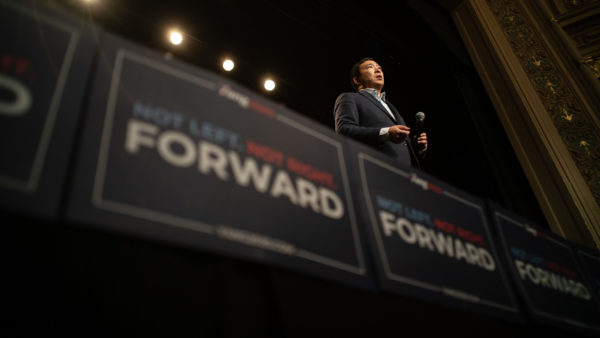Advertisement
Poll watch
If Joe Biden wins the state, it would be only the second time a Democratic presidential candidate has done so since 1952. But Arizona has been trending more friendly to the party for years.
Welcome to Poll Watch, our weekly look at polling data and survey research on the candidates, voters and issues that will shape the 2020 election.

If Arizona flips from red to blue this year — and according to most polls, that appears highly possible — it would be a historical outlier: The state has voted Republican in every presidential election since 1952, except one.
But it probably wouldn’t be a blip.
Arizona has been trending blue for years, driven by its increasingly ethnically diverse electorate and growing Democratic strength among suburban voters.
“The state’s clearly in motion,” Paul Maslin, a veteran Democratic pollster, said in an interview. A victory there for Joseph R. Biden Jr., Mr. Maslin added, “would be a furthering of those trends: the Latino vote locking in for Democrats, but also a suburban vote — around Phoenix and Tucson — moving Democratic.”
When Donald J. Trump beat Hillary Clinton by 3.5 percentage points in Arizona in 2016, he captured only 48 percent of the vote — less than any winning candidate in the state since Bill Clinton squeaked by with a rare Democratic victory in 1996.
Today, with most Arizona voters telling pollsters that they disapprove of how Mr. Trump has handled the coronavirus pandemic, surveys consistently show Mr. Biden with the advantage.
And in the race for the Senate seat once held by John McCain, the Democratic challenger, Mark Kelly — a retired NASA astronaut and the husband of former Representative Gabrielle Giffords — leads the Republican incumbent, Senator Martha McSally, among likely voters by anywhere from one percentage point, in a recent Washington Post/ABC News poll, to eight points, according to a New York Times/Siena College poll out this week.
If Mr. Kelly wins the Senate election, Mr. Biden prevails in Arizona and there is no change in the state’s House delegation — which Democrats now narrowly control — Arizona will be more solidly blue than at any point since the civil rights movement.
When the pandemic struck and the country’s economy hit the rocks, Mr. Trump found his most powerful argument for re-election thrown into jeopardy. That was particularly true in Arizona, where business had been booming. Corporations across industries — including tech, insurance and defense contracting — had opened new operations in the state in recent years, bringing high-paying jobs by the tens of thousands.
Partly as a result, Phoenix and its surrounding county, Maricopa, are now the fastest-growing city and county in the country, according to census data. On average, more than 250 people move to the Phoenix area each day.
A few years ago, a flood of good jobs into the suburbs around Phoenix might have been great news for Republicans, bringing an influx of middle-class and predominantly white voters to a county that accounts for three of every five votes cast in Arizona.
But particularly under Mr. Trump, the suburban political calculus has changed. Voters in the suburbs are now far less likely to support him or members of his party than they were just five years ago.
“It used to be that in Maricopa County, if you put an ‘R’ in front of your name, you’d win,” Chuck Coughlin, a longtime Republican strategist based in Phoenix, said in an interview. Now, he added, “that is not the case.”
In the Times/Siena poll, Mr. Biden trounced Mr. Trump by 58 to 33 percent among likely voters in Phoenix. But he was also running even with the president in the rest of Maricopa County, with each candidate receiving 45 percent support.
Republicans are increasingly forced to stake their political fortunes on the rest of the state — outside Maricopa as well as Pima County, home to the liberal bastion Tucson — where Republicans tend to broadly outnumber Democrats.
If Ms. McSally pulls off a victory in the Senate race, it will be thanks to those voters. Among voters outside Pima and Maricopa Counties, she enjoyed 50 percent support compared with Mr. Kelly’s 41 percent, according to the Times/Siena poll.


